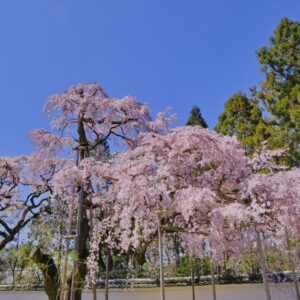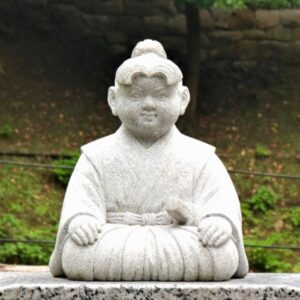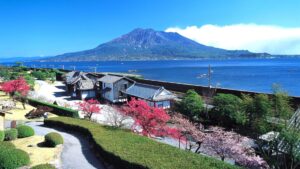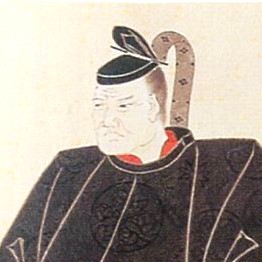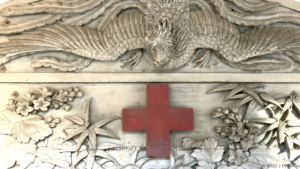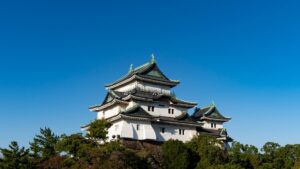Daigoji Temple, Cherry Blossoms Honoring Hideyoshi's Unification of Japan
Daigoji Temple, a World Heritage Site, has been known as Hana-no-Daigo (Cherry Blossom Flower Daigo) since the Heian period (794-1185), and some 700 cherry blossoms are in full bloom in spring, including weeping, Someiyoshino, mountain, and double-flowered cherry trees. The temple consists of several sub-temples and gardens spreading across a vast area of Mt. Daigo […]
Okazaki Castle, Hardship Made the Man: Tokugawa Ieyasu
Tokugawa Ieyasu (1543-1616, 徳川家康) was separated from his mother at the age of 3, became a hostage of Oda Nobuhide, father of Oda Nobunaga (1534-1582, 織田信長) at the age of 6, lost his father at the age of 8, then became a hostage of the Imagawa Yoshimoto (1519-1560, 今川義元). In total, he spent about 14 years […]
Shoko Shuseikan, The Wise Lord Shimazu Nariakira Seeded a Modern Nation
Shoko Shuseikan Museum, registered as one of "Japan’s Meiji Industrial Revolution, encompassing Iron and Steel, Shipbuilding, and Coal Mining," is a group of factories established in 1851 by Shimazu Nariakira (1809-1858, 島津斉彬), the 28th head of the Shimazu clan and the lord of Satsuma domain. With the threat of Western powers expanding into Asia becoming […]
Nagoya of Art and Culture, Tokugawa Yoshinao's Achievement
Within the Honmaru Palace of Nagoya Castle, esteemed artists of the Kano school, including Kano Tanyu (1602-1674, 狩野探幽), painted the finest sliding door paintings of tigers, pine trees, and other motifs. The 1,049 sliding door paintings survived the war and were completely restored and copied. These invaluable treasures continue to be precious gems that convey […]
Yoshino Jingu Shrine and Yoshimizu Shrine: The Heart of the Southern Court, Dedicated to Emperor Go-Daigo
In spring, Mt. Yoshino is adorned with approximately 30,000 cherry blossoms in full bloom, comprising about 200 different varieties of Yamazakura, mountain cherry blossoms, gradually reach full bloom in four areas - Shimo, Naka, Kami, and Oku – ascending from the base to the summit, taking about a month to unfold fully. The panoramic view […]
Sakuradamon Gate of Edo Castle ruins with beautiful cherry blossoms: Ii Naosuke lost his life
The stunning sight of cherry blossoms in full bloom reflecting on the water of Chidorigafuchi moat of the former Edo Castle, now the Imperial Palace, is breathtaking. Its beauty leads to the Sakuradamon gate, where a startling event occurred under a cold sky with heavy snowfall in 1860 for the Tokugawa Shogunate. Ii Naosuke (1815-1860; […]
Museum Meiji-Mura: Japan Red Cross Society Central Hospital, A Symbol of Relief Work in Peacetime
One of the wards of the Japanese Red Cross Central Hospital, delicately adorned with its exquisite exterior and state-of-the-art facilities, has been relocated to the Museum Meiji-Mura. Sunlight streams in through the glass wall of the corridor, and the long, straight, boarded corridor maintains a sense of pristine cleanliness. This wooden architecture exudes the esteemed […]
Hikone Castle, The life of Ii Naomasa, a Brave Warrior with Strong Diplomatic Skills
Hikone Castle, situated atop Mount Kinko along the shore of Lake Biwa, retains its stunning three-story structure, adorned with its white stucco exterior walls as it was in the past. The castle tower, a national treasure, showcases an elegant and rhythmical architectural style adorned with three types of gables: Kirizuma, Kara-hafu, and Iriomoya. Adding to […]
Wakayama Castle, A Great Lord, Yorinobu, laid the foundation of the Kishu's prosperity
In 1619, three years after Tokugawa Ieyasu's passing, his 10th son, Tokugawa Yorinobu (1602-1671, 徳川頼宣), received 555,000 koku, equivalent to the rice crop of yield (*) and established the Kishu domain (present-day Wakayama and southern Mie Prefectures). Wakayama Castle, the Kishu Tokugawa Family's residence, was extended and constructed at the mouth of the Kino River, […]
Hiraizumi: A Prosperous City of the Oshu Fujiwara Clan that Lasted 100 Years
The cedar-lined Tsukimizaka (Moon Viewing) slope of Chuson-ji Temple in a solemn mountain atmosphere brings you to the Konjikido Golden Hall, which retains its appearance of those days. Stepping into it, you may feel Fujiwara Kiyohira’s aspiration to build a Buddhist Land (an ideal peaceful nation on the Buddha’s teaching) from the entire structure. It […]

